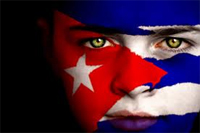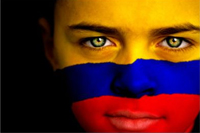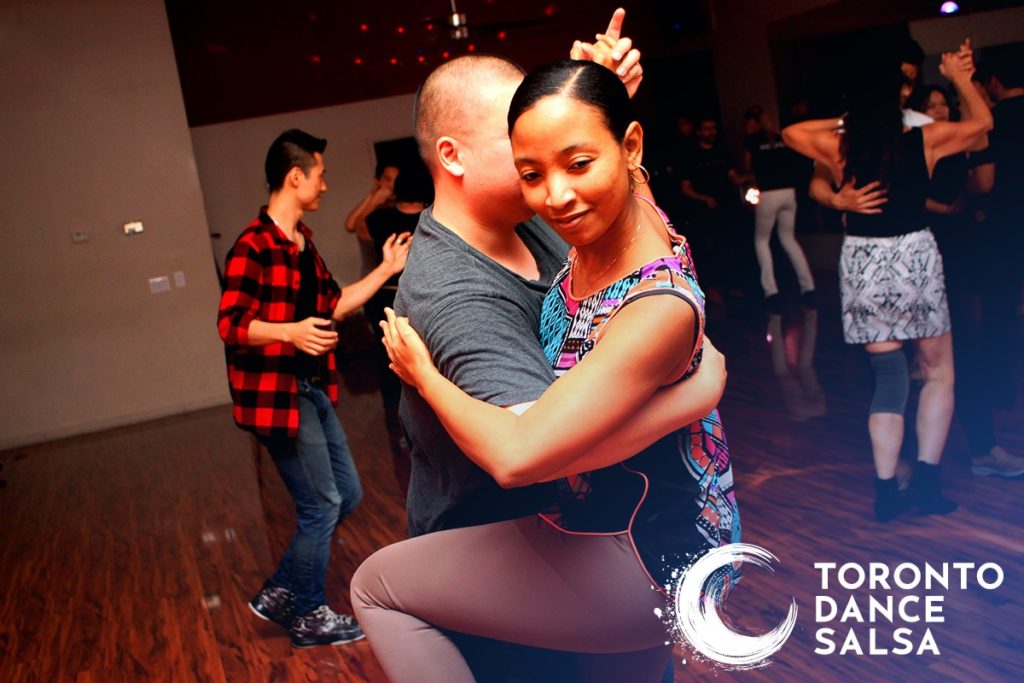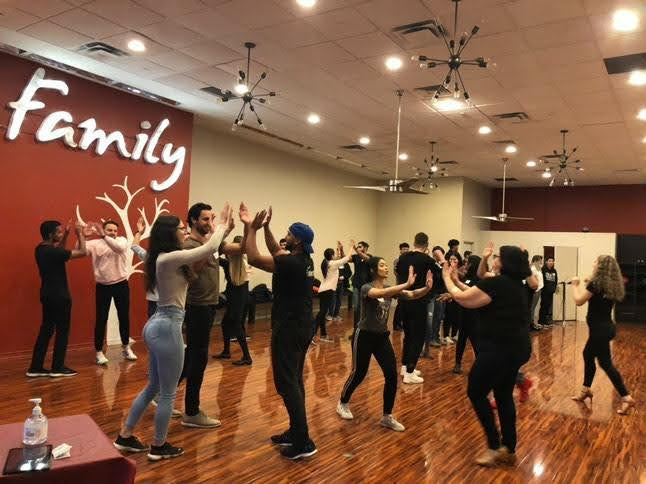Quick facts: Distinguishing between “The Styles”
“There are several features of the main styles of Salsa that distinguish one from the other.”
Salsa is danced world-wide – while many technical aspects of the dance are the same across styles (6 steps over 8 beats danced on a quick-quick-slow or slow-quick-quick rhythm), there are several “hallmark” features of the main styles of Salsa that distinguish one from the other.
Cuban (Casino) Style
 Also known as “Casino” style aside from being danced between two dancers (lead and follow), the figures in this style can also be danced in the “Rueda” (circle). Couples participating in a Casino Rueda dance all moves in unison as called by a Leader. Distinguishing features of Cuban style salsa are circular turn patterns (with “break back” steps on counts 1 and 5) as well as body movement inspired by traditional Afro-Cuban folkloric dances.
Also known as “Casino” style aside from being danced between two dancers (lead and follow), the figures in this style can also be danced in the “Rueda” (circle). Couples participating in a Casino Rueda dance all moves in unison as called by a Leader. Distinguishing features of Cuban style salsa are circular turn patterns (with “break back” steps on counts 1 and 5) as well as body movement inspired by traditional Afro-Cuban folkloric dances.
Cali (Colombian) Style
 Distinguishing features of Cali style salsa is quick and intricate footwork, danced with a strong hand hold connection between partners. Unlike the other 3 prevalent styles of Salsa dancing, Cali style does not include the Cross Body Lead type patterns.
Distinguishing features of Cali style salsa is quick and intricate footwork, danced with a strong hand hold connection between partners. Unlike the other 3 prevalent styles of Salsa dancing, Cali style does not include the Cross Body Lead type patterns.
New York (a.k.a “On-2”) Mambo style
 The origins of the style are a topic of debate, but it is said that New York style Salsa dancing originated in the 1960’s due to the influx of Latin American emigrants after the Cuban Revolution. Eddie Torres is the most well known New York style dancer, being almost universally credited with popularizing the style to dance centres outside of New York. Distinguishing features of New York style have couples executing turn patterns and figures in the “slot”, with the break step on count 2 and 6, to synchronize steps with the beats of the clave and tumbao (congas). The basic rhythm of “On-2” is slow-quick-quick.
The origins of the style are a topic of debate, but it is said that New York style Salsa dancing originated in the 1960’s due to the influx of Latin American emigrants after the Cuban Revolution. Eddie Torres is the most well known New York style dancer, being almost universally credited with popularizing the style to dance centres outside of New York. Distinguishing features of New York style have couples executing turn patterns and figures in the “slot”, with the break step on count 2 and 6, to synchronize steps with the beats of the clave and tumbao (congas). The basic rhythm of “On-2” is slow-quick-quick.
Los Angeles (a.k.a “L.A. On-1”) style
 The “youngest” of the styles of Salsa, L.A. Style (some people have called it “West Coast” style) became popular in the 1990’s and has its origins in ballroom (Mambo, Swing and ChaChaCha). Turn patterns lead and follow techniques are heavily influenced by these styles, with the Cross Body Lead being the cornerstone of the style. Distinguishing features of L.A. Style are execution of turn patterns and figures in the “slot”, with the break steps on counts “1” and “5”. This style is also characterized by fancy and often intricate arm styling by the follow to accent the “1” and “5” counts. The basic rhythm of “On-1” is quick-quick-slow.
The “youngest” of the styles of Salsa, L.A. Style (some people have called it “West Coast” style) became popular in the 1990’s and has its origins in ballroom (Mambo, Swing and ChaChaCha). Turn patterns lead and follow techniques are heavily influenced by these styles, with the Cross Body Lead being the cornerstone of the style. Distinguishing features of L.A. Style are execution of turn patterns and figures in the “slot”, with the break steps on counts “1” and “5”. This style is also characterized by fancy and often intricate arm styling by the follow to accent the “1” and “5” counts. The basic rhythm of “On-1” is quick-quick-slow.
I can’t wait to welcome you to our big family, have you coming in week to week, having fun, connecting with new friends and letting loose to amazing Latin songs. Click here to check our current schedule.
If you have any questions you would like me to answer here are some ways you can contact me: message me on Instagram (torontodanceSalsa), on Twitter (#torontodanceSalsa), on Facebook (Toronto Dance Salsa) or email me at [email protected].


